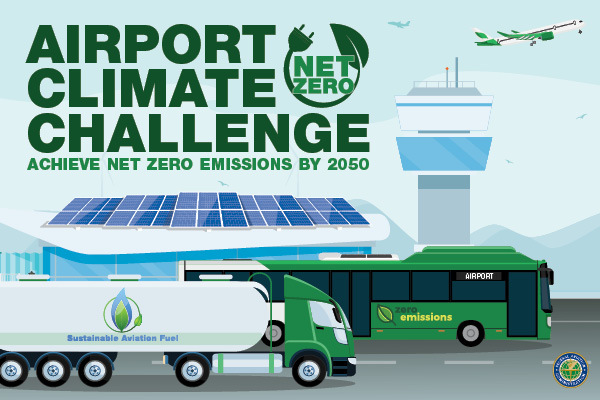|
You are subscribed to News & Updates from the FAA Homepage. This information has recently been updated, and is now available.
   FAA, U.S. Airports Team up to Meet 2050 Net-Zero Climate Challenge
WASHINGTON — The U.S. Department of Transportation’s Federal Aviation Administration and U.S. airports have launched an Airport Climate Challenge to help achieve the Biden-Harris Administration goal of net-zero emissions by 2050. Airports can take advantage of several FAA funding programs to meet this goal, including grants for low- or zero-emissions vehicles, renewable energy production, energy assessments and other efforts. The challenge is one of a number of initiatives underway to meet the Biden-Harris Administration’s goal of a net-zero aviation system by 2050.
“The United States should not only have the safest and most efficient aerospace system in the world, it can and should be the most environmentally sustainable as well. By partnering with the country’s airports, we can meet this climate challenge,” said FAA Associate Administrator for Airports Shannetta Griffin.
Airports Council International-North America and Airport Consultants Council will continue to support airports using FAA programs and funding. Airports can reduce greenhouse gas emissions through the following existing programs:
The FAA also announced it will develop a tool for airports to voluntarily estimate, track and report on the emissions reduction achieved when implementing projects supported by the airport programs.
“Airports remain committed to creating a more sustainable future for air travel. Reaching net-zero carbon emissions by 2050 will require steadfast dedication from government and industry partners, and we are grateful for continued collaboration as we work toward this important goal,” said ACI-NA President and CEO Kevin M. Burke. “But challenges remain. We know that most airport emissions are related to electricity, heating, and cooling. Upgrading airport facilities is critical to improving energy efficiency and reducing these emissions, further underscoring the tremendous need for additional infrastructure funding to help modernize our country’s aging airports.”
“Achieving the target goal of net-zero emissions at airports by 2050 will require a strong partnership by government, airport owners and industry. The members of ACC stand ready to meet the challenge and find solutions for a more environmentally sustainable aviation ecosystem,” said T.J. Schulz, President of the Airport Consultants Council, representing private companies that design and build airports.
In November, the U.S. released its first-ever comprehensive Aviation Climate Action Plan to achieve net-zero emissions by 2050. Earlier in 2021, the FAA announced more than $100 million in matching grants to increase aircraft efficiency, reduce noise and aircraft emissions, and develop and implement new software to reduce taxi delays. The White House also announced its Sustainable Aviation Fuel Grand Challenge, a government-wide initiative designed to catalyze the production of at least three billion gallons per year by 2030.
Find more information about the FAA and its environmental efforts at its Sustainability page.
|
